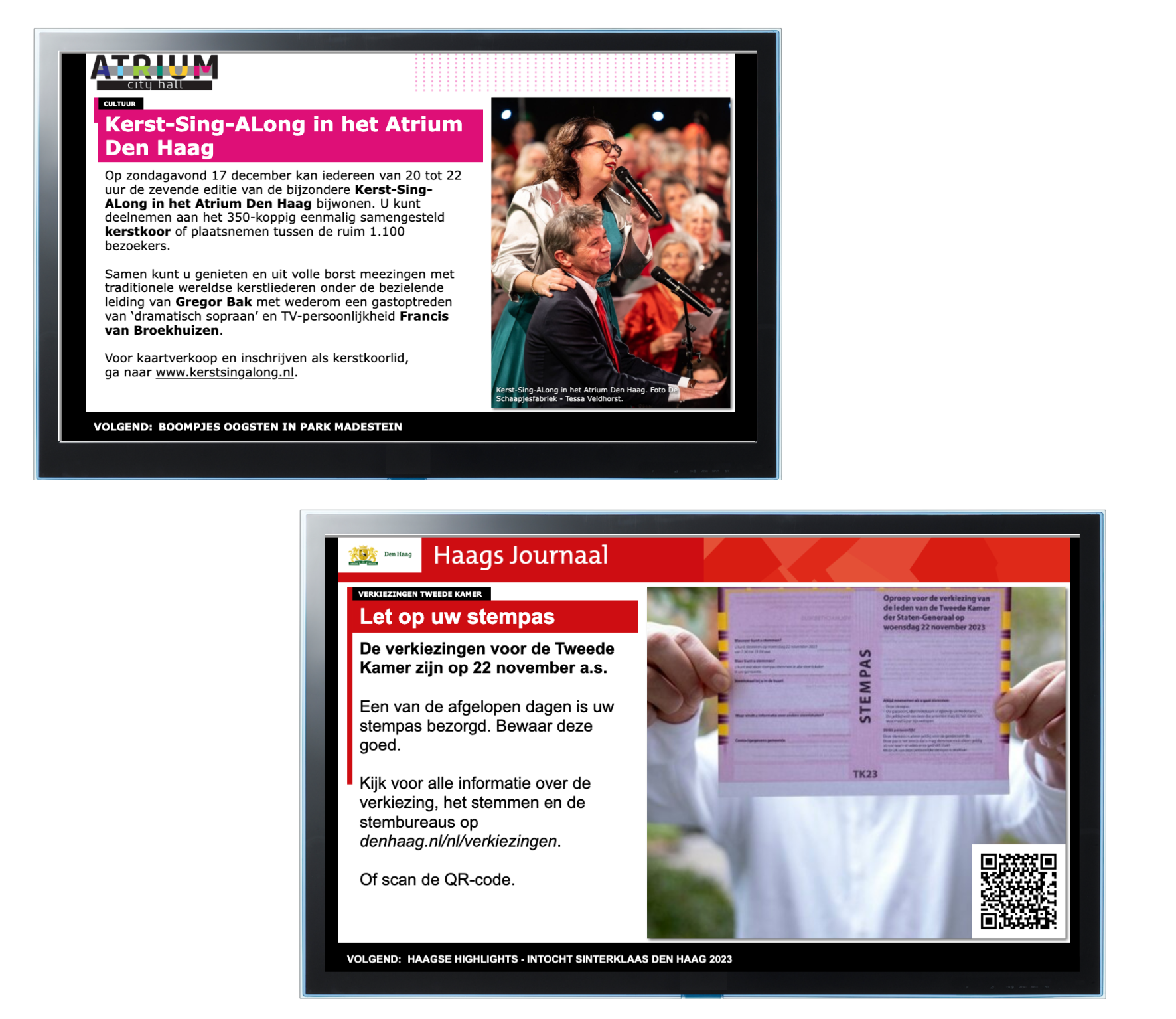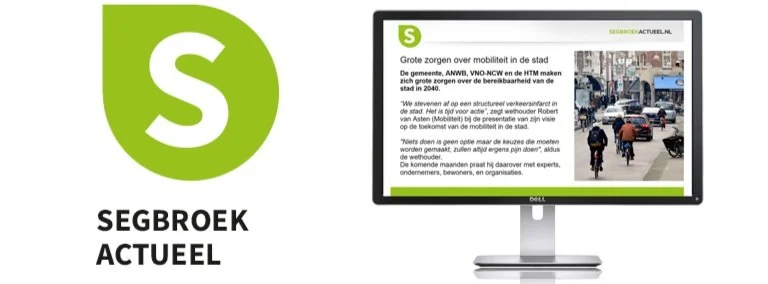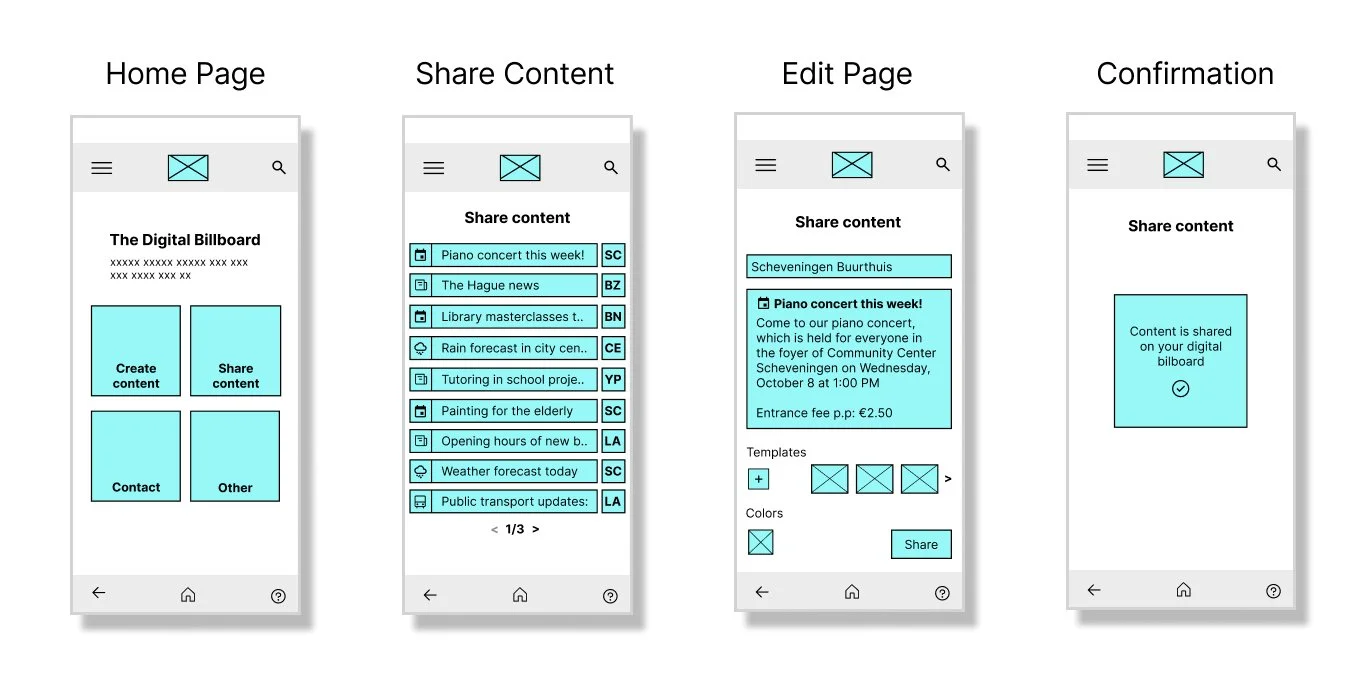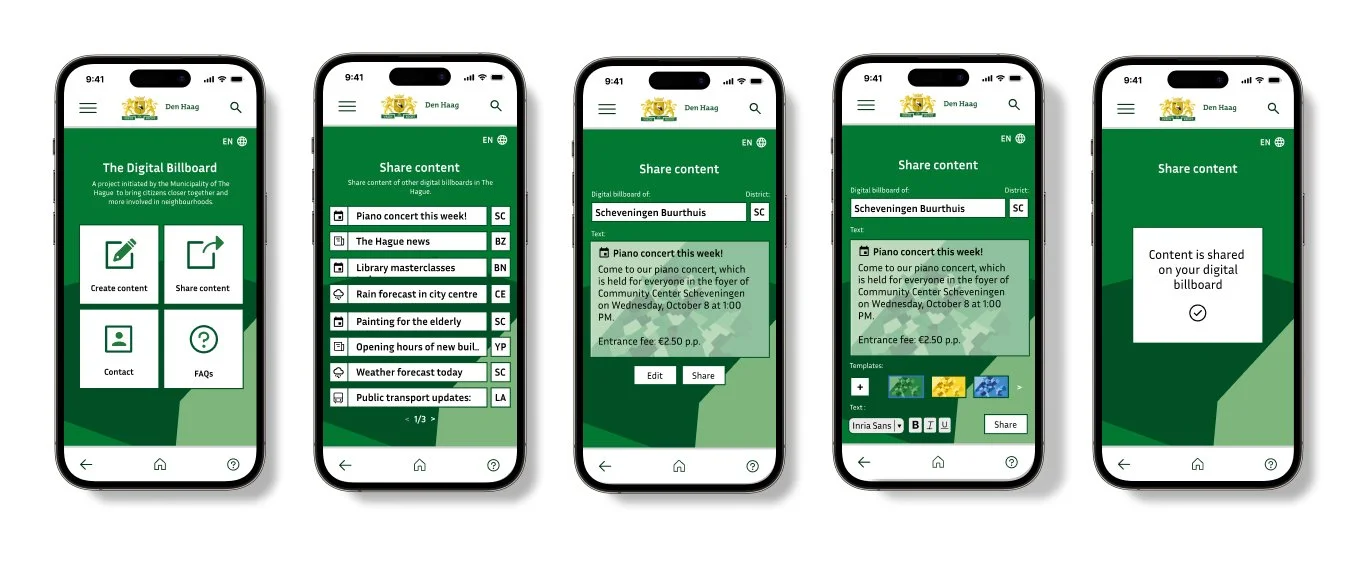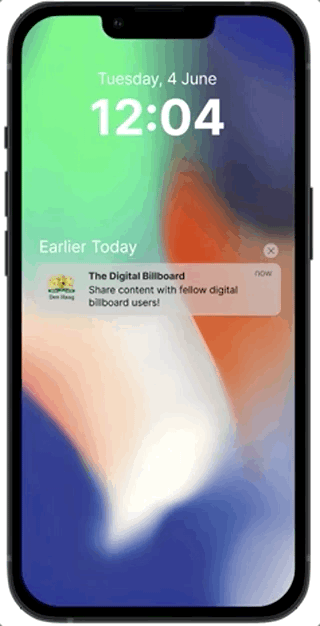My role
Solo bachelor thesis for Municipality of The Hague
Timeline
Research: February- November 2020
UX: October 2023
coNTEXT
What is the digital billboard project?
In 2008, the Municipality of The Hague started the digital billboard project as a way of bringing citizens closer together and more involved in their neighborhoods. Through these digital billboards, the Municipality offers organizations in The Hague a way to create, use and manage communication with other organizations through these digital billboards. For this reason, the digital billboard users (the citizens making, editing and sharing the content) are responsible for deciding what to put on these digital billboards. This content has to be non-commercial since it is meant to inform citizens in the city.
An interesting element of the digital billboards is that users have the option to share content from other digital billboards in the city. The Municipality of The Hague has specifically created this system so users of the digital billboard can look at the content of other users and share it on their digital billboard if they’re interested.The Municipality of The Hague encourages digital billboard users to share relevant information between each other.
Example of digital billboard content
Problem
Users do not often share content from each other
It turns out that users of the Municipality of The Hague’s digital billboard do not often share content from each other. In a survey sent to users of digital billboards by the municipality of The Hague in 2019, 60% of users who responded did not share content from other digital billboards. It is not clear to the Municipality of The Hague why digital billboard users are not sharing content with each other when it is technically very simple to do so. The Municipality wants to know what can be done to encourage users of the digital billboard to share more content with each other.
ANALYSIS OF OTHER SIMILAR PRODUCTS
Segbroek Actueel
The Municipality of The Hague, together with the city district office Segbroek of The Hague, have set up an editorial team in city district Segbroek to provide more content for their digital billboards. This editorial team makes content specifically for the city district Segbroek. This platform is called Segbroek Actueel (Segbroek Currently). Residents of Segbroek can pass non-commercial news to Segbroek Actueel and the editors will make sure it gets displayed on their digital billboard.
Because of Segbroek Actueel, content is shared more on the digital billboards in Segbroek than in other city districts in The Hague. This is mainly because there is an editorial team behind it who actively endorses it. It is important for the founders of Segbroek Actueel that this platform of Segbroek keeps existing since it is a unique way of bringing local news to the neighborhood.
Environment app
The Municipality of The Hague has made their own environment app for citizens in The Hague. With this app, citizens will get informed about ongoing projects in their city districts. Furthermore, citizens receive information about work, news and updates, possible closures and plannings. Citizens also have the option of contacting The municipality of The Hague themselves through this app.
BREAKDOWN OF SOLUTION
Users find it difficult to share content because of the design system
After conducting several interviews with users of digital billboards, it has become clear that users are not satisfied with the current system of digital billboards because they find it difficult to share content. This is especially the case when it comes to the current overview design in the system where users can share other users' content.
The main recommendation for the Municipality of The Hague is to change some aspects in the online digital billboard system. In particular, redesigning the overview ‘Bericht overnemen’ (share messages page), so users can more easily and quickly see all the content that can be shared from other users. Furthermore, users ask for more templates. Furthermore, the current templates in the system limit certain users to share content from others because users believe the current templates are a bit boring and do not fit in with the users organisations. It is advised that the Municipality of The Hague supports newer templates in the system to make content more appealing to share. This includes templates with different fonts, more colours, larger images and less text.
This will encourage users to share more content from each other through their digital billboard.
Task flow
A task flow designed to showcase the digital billboard system
In order to fully understand how to redesign the layout of the digital billboard system,a task flows have been designed to show how the digital billboard system works.
user flow
All steps users go through in the app
Based on the task flow, the user flow was created to show how a digital billboard users can share content from other users from start to finish (zoom in on the picture to read it properly).
Wireframes
Taking inspiration from existing apps of The municipality of The Hague
To visualise what the digital billboard app will look like, I first created the structure wireframes in Figma. In doing so, I looked at several apps and website designs of The Municipality of The Hague and applied in into the wireframes.
LOW-FIDELITY PROTOTYPES
Adding small text and icons
After creating the structure of the wireframes, I proceeded to create the low-fidelity prototypes in Figma. In doing so, I looked at where text and images will appear in the app. I also added small icons to the prototypes.
FINAL PRODUCT
The final design for the digital billboard app
The final app design for digital billboard shows how users of digital billboards can share content more easily. Users can click on the digital content of other users they want to share, edit the colors, fonts or templates they would like to use and share it to their own digital billboard. Below is a gif I made to show how users can use the app.
Gif of the final design
CONCLUSions & reflection
What would I do differently next time?
More interviews from sample size. A total of 21 users were approached. In the end, only eight users were interviewed. This is due to the fact that it was difficult to get ahold of participantsduring the current Covid-19 pandemic. Covid-19 measures made it impossible to plan interviews in physical places since everything had to be done digitally. This caused some hindrance since not every participant accepted the invitation for a digital interview in the timeframe of for this report. Next time, I would opt for more users to be interviewed. Nonetheless, the research conducted from the eight interviews worked out really well.
User flow too large to see. After making the entire user flow and uploading it to my portfolio, I realised that the frame I was using was too big to read all the text properly. The frame I used is one big timeline. Therefore, it cannot be broken up into two equal pieces that are more zoomed in. Next time, I will make sure that the user flow is not one big timeline, so it can be more readable.

